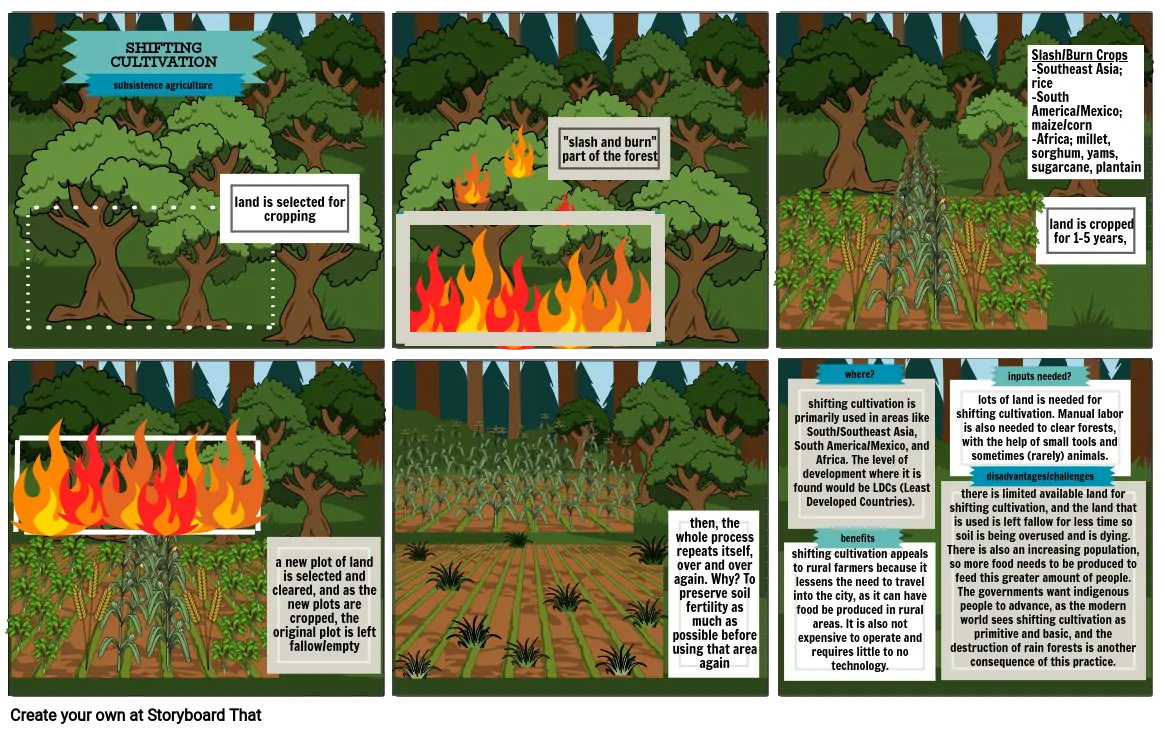Rice Terracing - APHUG Agriculture Storyboard

Tekst Storyboardowy
- SHIFTING CULTIVATION
- subsistence agriculture
- land is selected for cropping
- "slash and burn" part of the forest
- Slash/Burn Crops-Southeast Asia; rice-South America/Mexico; maize/corn-Africa; millet, sorghum, yams, sugarcane, plantain
- land is cropped for 1-5 years,
- a new plot of land is selected and cleared, and as the new plots are cropped, the original plot is left fallow/empty
- then, the whole process repeats itself, over and over again. Why? To preserve soil fertility as much as possible before using that area again
- shifting cultivation appeals to rural farmers because it lessens the need to travel into the city, as it can have food be produced in rural areas. It is also not expensive to operate and requires little to no technology.
- shifting cultivation is primarily used in areas like South/Southeast Asia, South America/Mexico, and Africa. The level of development where it is found would be LDCs (Least Developed Countries).
- benefits
- where?
- there is limited available land for shifting cultivation, and the land that is used is left fallow for less time so soil is being overused and is dying. There is also an increasing population, so more food needs to be produced to feed this greater amount of people. The governments want indigenous people to advance, as the modern world sees shifting cultivation as primitive and basic, and the destruction of rain forests is another consequence of this practice.
- lots of land is needed for shifting cultivation. Manual labor is also needed to clear forests, with the help of small tools and sometimes (rarely) animals.
- disadvantages/challenges
- inputs needed?
Utworzono ponad 30 milionów scenorysów

